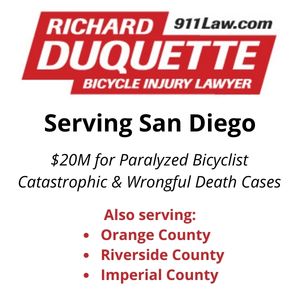
They get it.
A new report says ebikes and e-scooters are better for short trips than cars.
Electric scooters and bikes have a “universal potential” to provide more efficient, cheaper ways to get around U.S. cities than driving a car…
Why? It’s largely because drivers in many U.S. cities are taking short trips and sitting in traffic when they could be taking another transit mode.
Not surprisingly, the study ranked Los Angeles as having the ninth-best potential to replace motor vehicle trips with micromobility — or a regular bike, for that matter — with 49% of all car trips in the city just three miles or less.
All we need is safe places to ride them.
Ebike photo courtesy of Metro Bike.
………
With all due apologies to Lance, Eddy Merckx, Einstein and Steve Jobs, this may just be the best bike quote ever.
You can be feminine and girly and sparkly and be a really badass bike racer as well.
That’s from newly crowned world cross-county mountain bike champ Kate Courtney, the first American in 17 years to win the title.
And something that should be a mantra for every little girl from the time they’re old enough to ride a bike.
………
CiclaValley discovers the construction barriers have finally been removed from the LA River bike path between Zoo Drive and the Riverside Bridge.
And provides a detailed tutorial on plans for the pathway, and why it’s still far from finished.
His movie making skills are improving, too.
………
Washington Capitals hockey star Alex Ovechkin is one of us. That’s the good news.
OH NO OVI: Alex Ovechkin (@ovi8) details the bicycle accident that left him looking pretty rough. His message today: always wear a helmet! #Capitals @nbcwashington pic.twitter.com/sf1EvyekPu
— NBC4 Sports (@NBC4Sports) September 10, 2019
………
Rock star and former Amy Winehouse boyfriend Pete Doherty is one of us, too, walking his dogs on a London bikeshare bike.
https://twitter.com/JordanMolinari_/status/1170994419618713600?ref_src=twsrc%5Etfw%7Ctwcamp%5Etweetembed%7Ctwterm%5E1170994419618713600&ref_url=https%3A%2F%2Fwww.nme.com%2Fnews%2Fmusic%2Fwatch-pete-doherty-get-pulled-along-huskies-boris-bike-2547011
………
The war on cars may be a myth, but the war on bikes is all too real.
A 17-year old British bike rider may have been deliberately targeted by the 16-year old hit-and-run driver who ran him down and dragged him underneath his car, and is now facing a murder charge. This is the same crash we mentioned yesterday where bystanders picked up the car to lift it off the victim in a failed attempt to save his life.
But sometimes, it’s the people on bicycles behaving badly.
After trading blows — or mostly receiving them — with the driver of an SUV, an Aussie bicyclist picked his bike up and tried to ram it through the car’s window. Which may have been satisfying in the moment, but couldn’t have done the poor bike a lot of good.
………
Local
A Palmdale letter writer says asking bike riders to pay a reasonable fee is the right thing to do, since car, truck and mobile home owners have to pay DMV fees. Never mind that DMV fees and gas taxes cover wear and tear on the roads, which bikes don’t cause. And that the overwhelming cost of local streets and roads, where bicyclists ride, come out of general tax funds, which we all pay. So in reality, he’s asking for bike riders to pay twice for damage we don’t cause. Seems fair.
A development company has proposed building a six-story, 236-unit apartment complex on environmentally sensitive land between the confluence of Ballona and Centinela creeks, just south of the Marina Freeway. The good news is that it includes plans for a much-needed bike and pedestrian bridge connecting the south bank to the Ballona Creek bike path; the bad new is, the bridge will be private.
Torrance police have finally identified the man who murdered an 11-year old girl, 47 years after she disappeared while riding her bike. And 16 years after the asshole her killer died.
State
A San Diego letter writer whose sole form of transportation is a bicycle says bring on the controversial 30th Street bike lanes.
Tragic news from Visalia, where a 61-year old woman was killed by a hit-and-run driver as she rode her bike, dragging her the length of two football fields under his car as he made his getaway; police arrested the allegedly drunk driver a short time later.
Monterey — which my brother should be passing through today or tomorrow on his bike tour of the left coast — is nearly finished with a new $8.5 million Complete Street makeover of North Fremont Blvd, including protected and physically separated bike lanes, as well as bike crossing signals.
They get it, too. A Petaluma newspaper says the city needs to do a lot more to make it friendly for bicyclists, calling bicycling one of the best ways to fight climate change.
They’ve got a point. Berkeley bike riders complain about hefty $238 fines for rolling stop signs — before court costs. Which is one more argument for a California version of the Idaho Stop Law; bike riders who carefully roll stops without jeopardizing anyone’s safety shouldn’t be punished that severely. Or at all.
National
Bicycling takes a look at the hottest new bikes for fall.
Forbes looks at American bike part maker SRAM, saying it came out of nowhere with a single product to take on the established manufacturers.
Nonprofit bicycle registry Bike Index has introduced plugins for bike shop point-of-sales software to automatically register bikes in the background when customers purchase new bikes. Or get a free, lifetime registration with Bike Index here.
CityLab says instead of fighting it out, cities and private mobility companies should work together for a brighter multimodal future. Or we could just wait for the inevitable collapse of our gridlocked street systems, and wave at all the people trapped in their cars as we zoom by.
Curbed takes Amazon to task for putting 20,000 new delivery vans on the streets, calling for smaller, right-sized vehicles and delivery bikes to cut emissions and improve safety.
Portland offers a five-year progress report on their 2030 bike plan, only five years late. So maybe there’s hope for LA yet. Although something tells me Portland’s made a lot more progress than we have.
There’s a special place in hell for whoever stole a three-wheeled adaptive bicycle from a 12-year old Arizona boy with cerebral palsy.
Streetsblog Chicago offers some decent advice for casual bicyclists to keep riding a bike from being intimidating.
An Ohio high school teacher will be very late for class, after she was taken to a hospital when a driver ran into her bike on the way to school.
Seriously? A Kentucky letter writer says bikes are great fun! But rip out all the damn bike lanes because cars rule the road!
As New York Mayor Bill De Blasio continues his quixotic quest for the White House, back home advocates take him to task for a recent call for mandatory bike helmets and bike licenses, and demand that he focus on the real issues killing bike riders instead, like bad streets and reckless driving.
A Virginia letter writer says more cars aren’t the answer. And for every idiot he’s seen on a bicycle, he’s seen 10,000 more in cars.
A Florida woman organized a bike ride to honor 9/11 victims on the 18th anniversary of the attack on the Pentagon and World Trade Center —including her own brother, a New York firefighter killed when the buildings came down.
International
Canadian Cycling Weekly discusses things you’ll inevitably have to explain to your non-cycling partner. When my wife and I first moved in together, she said my bike belonged on the balcony. I patiently explained that yes, I loved her, but I’ve known my bike a helluva lot longer. And if my bike has to sleep out there, so do I.
Vancouver cops bust a massive bike theft ring, recovering 150 purloined bicycles, including ebikes and high-end bikes. Makes you wonder how many they stole and moved or chopped before they got caught.
Employees at a British Columbia Starbucks pitched in to buy a new bike for an 18-year old Iraqi refugee after his was stolen from the patio as he worked there as a barista.
London — no, the one in Ontario, Canada — introduces the province’s first bicycle mayor, tasked with promoting bicycle infrastructure in a car-oriented city. Which sounds a lot like a certain SoCal city I could name, which hasn’t even considered appointing a bike mayor.
A Toronto man returned a stolen bicycle to its owner after the thief upgraded to his bike, slicing through the lock with a power tool in broad daylight
A UK thief gets eleven years for killing a bike rider while fleeing from police in a stolen SUV, along with another 18 months for a pair of burglaries.
No, Road.cc, it wasn’t a five-year old cyclist that got knocked off his bike by an adult hit-and-run bicyclist. It was a five-year old little boy on a bicycle.
The bike-riding, but apparently not very observant, former editor of the prestigious medical journal BMJ — formerly the British Medical Journal — says the time has come to license and register bicyclists, so they’ll obey the law like other road users. Most of whom don’t, regardless of license and registration.
After making an ill-advised pass around a group of bicyclists, a Scottish woman avoids a head-on crash with an oncoming car by steering back into the soft, squishy people on bikes instead, injuring two people.
An Irish father fights back against accusations that he put his eleven-year old son at risk by letting him ride to school without a helmet or hi-viz, saying he didn’t think a hemet would help in the event of a collision.
Philippine bike riders say banning bicycles from the bridges connecting Mactan Island and Mandaue City isn’t the answer.
A Buddhist bell maker in Kyoto, Japan is producing handmade Orin temple bell-style bike bells, designed to resonate through the bike frame to amplify the sound and warn people a bike is coming, while it drives away evil thoughts at the same time. Seriously, if anyone has me on their secret Santa list, this is what I want. Or a corgi.
Competitive Cycling
The Vuelta’s Wednesday stage was the fastest ever Grand Tour stage over 125 miles; riders said gusting crosswinds and aggressive tactics made the stage ruthless.
While the Vuelta lumbers on, the Tour of Britain rolls through its fifth stage.
VeloNews looks at world championship favorite Mathieu van der Poel’s murky future in road cycling, as he prepares to focus on mountain biking in the 2020 Olympics.
The Princeton Alumni Weekly profiles 77-year old John Allis, who went from novice bike rider to co-founding the Princeton cycling team to a three-time Olympian.
Finally…
No, really. You’re not a bike thief, you’re a bicycle collector. If you’re planning to walk out of a pawn shop with a $4,000 bike, maybe don’t leave your name first.
And why suffer in traffic when you can just drive your cab down a protected bike lane?
Got an unexpected tour of the Dunsmuir #Cycletrack from my taxi driver on the way to #Railvolution #Vancouver pic.twitter.com/CfM9HqcCGl
— Nolan Lienhart (@nlienhart) September 9, 2019













